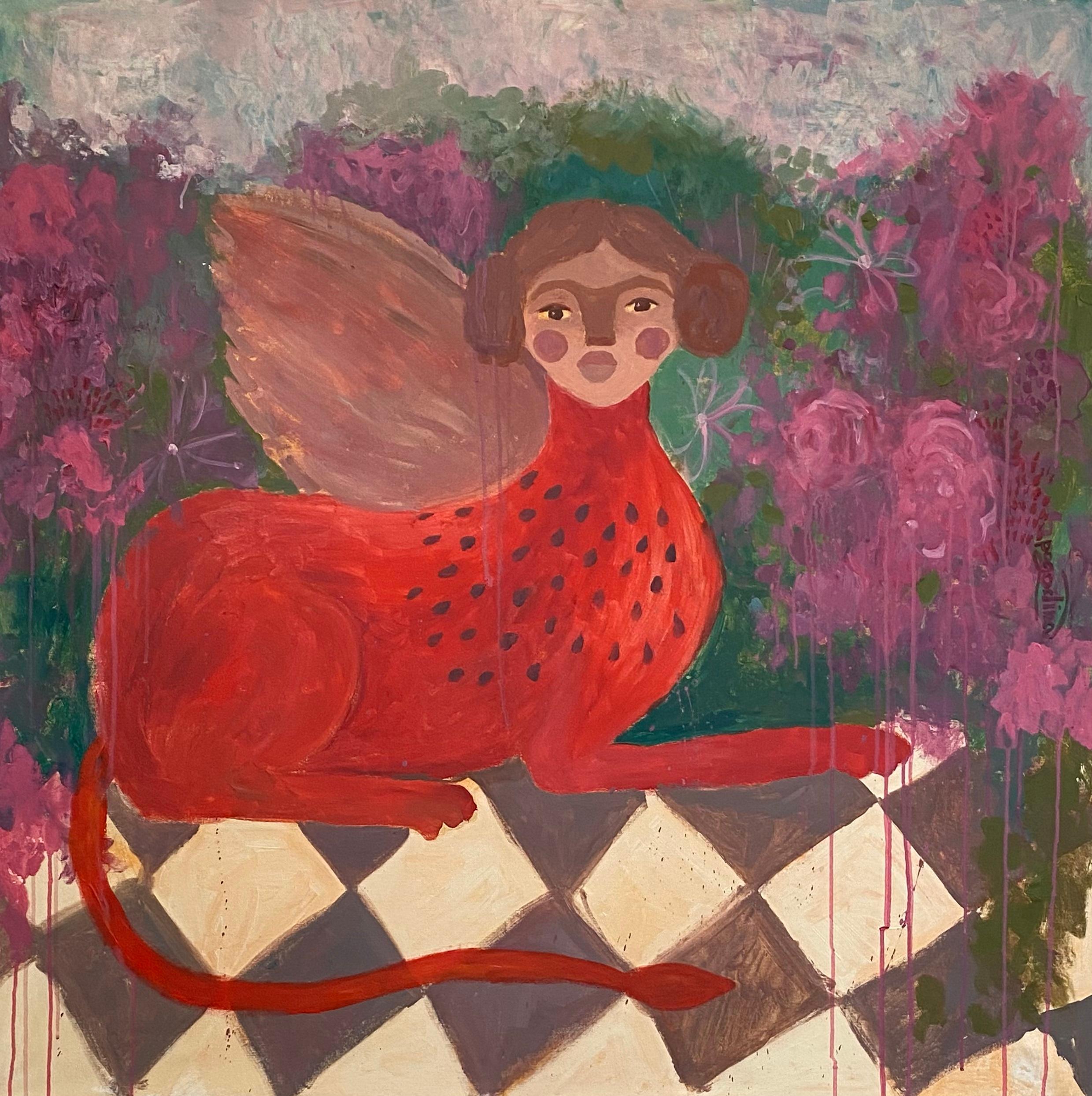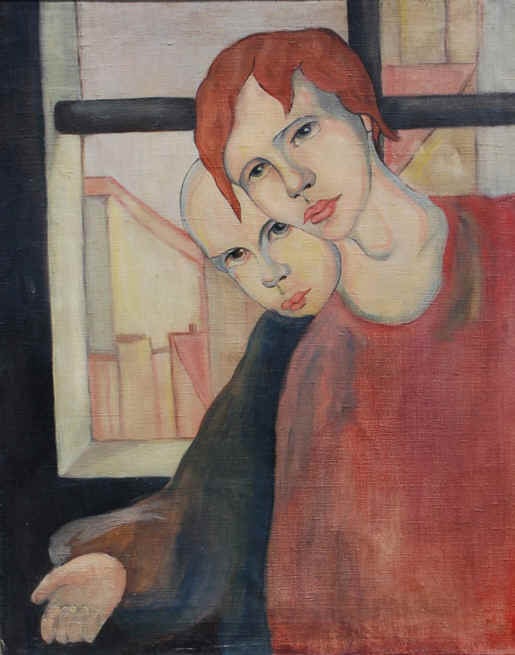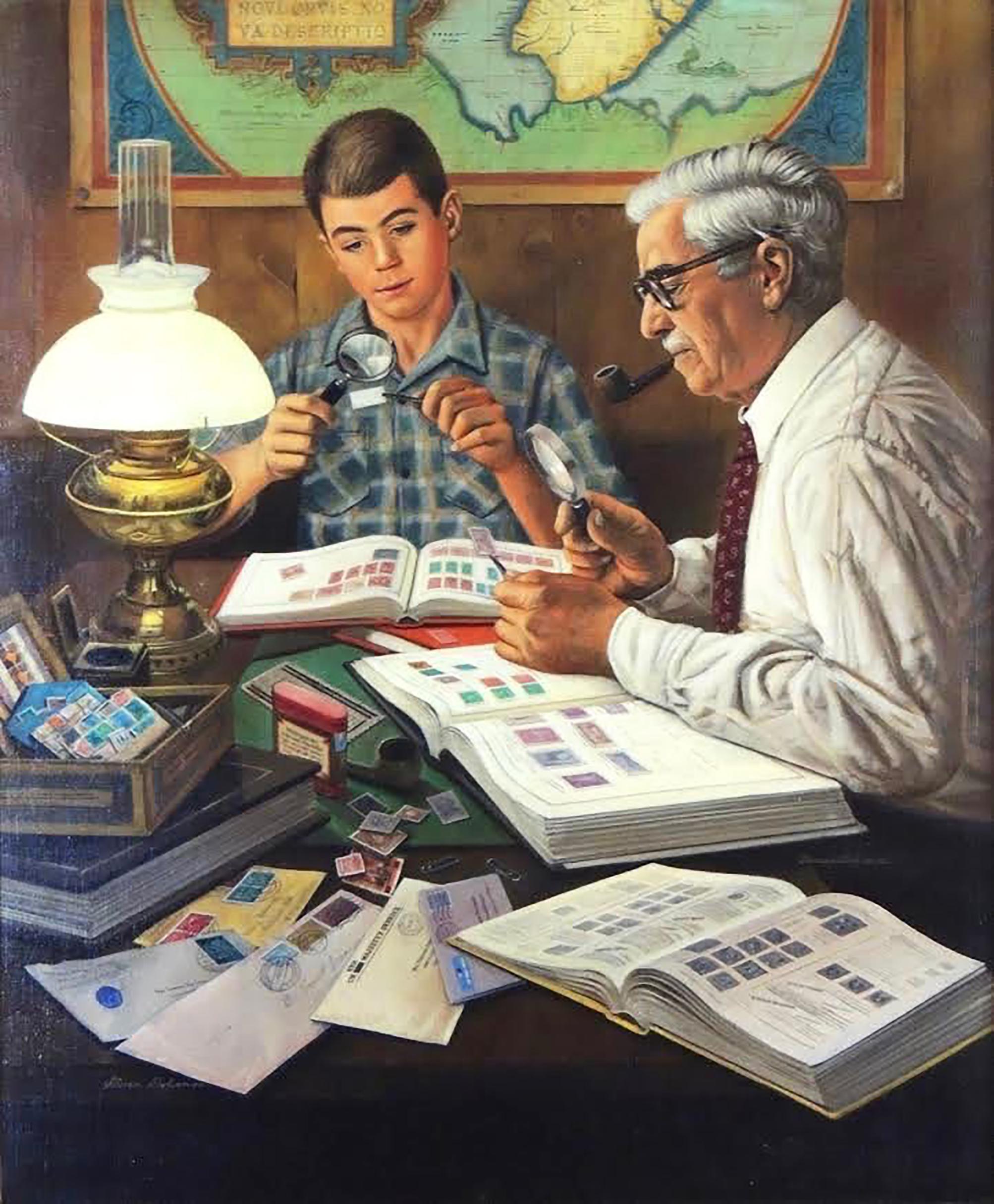Items Similar to "A Reverie During The Ball", 19th Century Oil on Canvas by Rogelio Egusquiza
Want more images or videos?
Request additional images or videos from the seller
1 of 17
Rogelio de Egusquiza y Barrena"A Reverie During The Ball", 19th Century Oil on Canvas by Rogelio Egusquiza1879
1879
About the Item
ROGELIO DE EGUSQUIZA
Spanish, 1845 - 1915
A REVERIE DURING THE BALL
signed and dated "Rogelio Egusquiza, 1879" (lower right)
oil on canvas
21-3/4 X 33-5/8 inches (55 X 85cm.)
framed: 28-1/4 X 40-1/4 inches (71.5 X 102 cm.)
PROVENANCE
Bonham´s London - Sale date 13th November 2007.
Private Spanish Collector
An intimate work by Rogelio de Egusquiza, dated in 1879 that corresponds to the time when Egusquiza breaks with his previous way of painting and begins a stage with large-format works and all related to music, and more specifically with Wargner.
In the foreground of the work we see a female figure with an attitude of repose, painted with exquisite delicacy, bathed all of it with a warm indirect light.
Rogelio de Egusquiza y Barrena (Santander, 1 1845-Madrid, February 10, 1915) was a Spanish painter, sculptor and engraver, especially known for being a friend of the German composer Richard Wagner, having made Wagnerian-themed paintings, and contributing to the dissemination of its aesthetics in Madrid.
He trained in Madrid and at the Imperial School of Fine Arts in Paris. From the late 1860s, he resided in Paris. The theme of his works was in this historicist era. Subsequently, he made genre painting and portraits, and all in an academic style.
After the death of Mariano Fortuny, he was in his workshop in Rome, working with the Madrazo, Raimundo and Ricardo, until 1875.
He met Wagner's music in 1876, while in Paris, which led him to travel to Munich to listen to The Nibelungo Ring in 1879. His enthusiasm for the music and aesthetic ideas of this composer led him to know him personally, for what went to his house in Bayreuth. In later years, he met the composer several times: Venice, 1880; Berlin, 1881 and Bayreuth, 1882. On this last occasion, he attended the premiere of Parsifal. He is one of the only two Spanish friends that Wagner had; the other was the music critic Joaquín Marsillach.
From his encounter with Wagner, Egusquiza took a turn to his career and devoted himself to painting Wagnerian themes, more portraits of his characters than concrete scenes, in a symbolist style. And also portraits, like that of Schopenhauer and Louis II of Bavaria. He was the only Spaniard, apart from Dr. José de Letamendi, who collaborated in the magazine Bayreuther Blätter, with an article on lighting in the theater, entitled «Ueber die Beleuchtung der
He participated in the Rosicrucian salons of 1892, 1893, 1896 and 1897. He presented prints on Parsifal (Kundry, Amfortas, Parsifal, Titurel and The Holy Grail) at the Universal Exhibition of Paris in 1900, where he was recognized with a medal silver; He was part of the Aureliano de Beruete jury.3 The French government distinguished him with the Legion of Honor.
Although he lived in Paris, he frequently traveled to Madrid, where his sister lived. He joined the Madrid Wagnerian circle, around the Lhardy restaurant. With his painting, he influenced the reception of Wagnerism in the capital. As Paloma Ortiz de Urbina y Sobrino points out:
It conserves works of Egusquiza, mainly, the Museum of the Prado, having some in the National Library of Madrid, and in the Museum of Modern and Contemporary Art of Santander and Cantabria. In addition to drawings and prints, the Prado Museum preserves a bronze bust of Richard Wagner (1892).
To celebrate the second centenary of Wagner's birth, the Prado exhibited, between November 5, 2013 and September 7, 2014, works by Egusquiza, in room 60 of the Villanueva building, with the title "Evil vanishes" .
EXHIBITED
Fundación MAPFRE , Madrid
Sala Recoletos
19 Septiembre 2019 - 12 Enero 2020
"El espíritu de una época BOLDINI y la pintura española a finales del siglo XIX", page 226, illustrated
- Creator:Rogelio de Egusquiza y Barrena (1845 - 1915)
- Creation Year:1879
- Dimensions:Height: 21.66 in (55 cm)Width: 33.47 in (85 cm)
- More Editions & Sizes:55 x 85 cm.Price: $59,914
- Medium:
- Movement & Style:
- Period:
- Condition:
- Gallery Location:Madrid, ES
- Reference Number:1stDibs: LU128115607371
About the Seller
5.0
Vetted Seller
These experienced sellers undergo a comprehensive evaluation by our team of in-house experts.
Established in 1977
1stDibs seller since 2019
21 sales on 1stDibs
Typical response time: 1 hour
- ShippingRetrieving quote...Ships From: Madrid, Spain
- Return PolicyA return for this item may be initiated within 14 days of delivery.
More From This SellerView All
- "Ballet Lessons", 20th Century Oil on Canvas by Sebastián Llobet Ribas, SpanishLocated in Madrid, ESSEBASTIÁN LLOBET RIBAS Spanish, 1887 - 1975 signed "Llobet Ribas" (lower right) signed again "Llobet Ribas" (on the reverse) oil on canvas 32 x 25-3/4 inches (80.5 x 65 cm.) unframed PROVENANCE Private Collector, Barcelona Painter and draftsman of the twentieth century, born in Barcelona in 1887. He attended the Fine Arts Schools and was a disciple of Vicente Climent. He participated in the Self-Portraits Exhibition held in 1907, in the Drawing Exhibition in the Sala Parés in 1910, in several of the Spring and International Exhibition, and in the National Exhibition of 1942 and 1944 in Barcelona and in 1950 in Madrid. In the 1951 Exhibition of the Circulo de Bellas Artes de Palma de Mallorca, he obtained a medal for the set of drawings...Category
1930s Realist Figurative Paintings
MaterialsCanvas, Oil
- "Les Musiciens", 20th Century Oil on Canvas by Spanish Artist Celso LagarBy Celso LagarLocated in Madrid, ESCELSO LAGAR Spanish, 1891 - 1966 LES MUSICIENS signed "Lagar" (lower right) signed again, located & dated "Lagar / Paris 1928" (on the reverse) oil on canvas 23-3/4 x 28-3/4 inches ...Category
1920s Fauvist Figurative Paintings
MaterialsCanvas, Oil
- "Reales Alcázares de Sevilla" Large 20th Century oil on canvas by Liger HidalgoBy Fernando Liger HidalgoLocated in Madrid, ESFERNANDO LIGER HIDALGO Spanish , 1880 – 1945 "INTERIOR REALES ALCAZARES, SEVILLA" Signed & located "F. Liger Hidalgo, Sevilla " (lower right) ...Category
1920s Realist Interior Paintings
MaterialsCanvas, Oil
- "Espagnoles, 1971", 20th Century Oil on Canvas by Artist Emilio Grau SalaBy Emilio Grau SalaLocated in Madrid, ESEMILIO GRAU SALA Spanish, 1911 - 1975 ESPAGNOLES, 1971 signed "Grau Sala" (lower left) signed again, dated and titled "Grau Sala, 1971, espagnoles" (on the reverse) oil on canvas 1...Category
1970s Post-Impressionist Figurative Paintings
MaterialsCanvas, Oil
- "Interior of Alcazar of Seville", Early 20th Century oil on canvas by F. LigerBy Fernando Liger HidalgoLocated in Madrid, ESFERNANDO LIGER HIDALGO Spanish , 1880 – 1945 "Interior of Alcazar of Seville" Signed & located "F. Liger, Sevilla " (lower left) Oil on canvas 2...Category
1920s Realist Interior Paintings
MaterialsCanvas, Oil
- "Wedding Ceremony in Tebriz", 19th Century Oil on Canvas by Mohamed Ali NaqashLocated in Madrid, ESMOHAMED ALI NAQASH Iraqi, 19th - 20th Century WEDDING CEREMONY IN TEBRIZ signed in arabic and inscribed Mohamed Ali al-Naqash / Tabrizi lower right oil on c...Category
Early 1900s Realist Figurative Paintings
MaterialsCanvas, Oil
You May Also Like
- Play for meLocated in Sempach, LUThis painting will come to you stretched on a wooden stretcher and completely ready to be placed in the interior. ABOUT THE ARTWORK "Play for Me," as part of the PERICHORESIS SERIES...Category
2010s Symbolist Interior Paintings
MaterialsAcrylic, Canvas
- Garden guardianLocated in Sempach, LUThis painting will come to you stretched on a wooden stretcher and completely ready to be placed in the interior. ABOUT THE ARTWORK "The 'Garden Guardian' serves as the keeper of our...Category
2010s Symbolist Interior Paintings
MaterialsCanvas, Acrylic
- DedaleBy Jan Frans DeboeverLocated in West Hollywood, CABelgian Symbolist artist Jan Frans DeBoever (1872 - 1948), created symbolist/allegorical paintings throughout his lifetime. He centralized on allegorical and literary subjects, gener...Category
1920s Symbolist Figurative Paintings
MaterialsOil, Panel
- Mid 20th Century French Symbolist Oil St. Francis of Assisi in Garden, signedLocated in Cirencester, GloucestershireArtist/ School: French School, mid 20th century, artists details to reverse. Title: St. Francis of Assisi, painted in a Symbolist style. Medium: oil on board, framed Framed: 27...Category
Mid-20th Century Symbolist Figurative Paintings
MaterialsOil
- The BrothersBy Gertrude KlarisLocated in West Hollywood, CAAn original oil on canvas by Hungarian artist Gertrude Klaris. Klaris worked in oils but pramrily in mixed media works on paper, much of her style is akin to her love of stained glas...Category
1910s Symbolist Figurative Paintings
- The Stamp Collector, Saturday Evening Post CoverBy Stevan DohanosLocated in Fort Washington, PAMedium: Oil on Canvas with an Element of Collage Signature: Signed Lower Left Original cover illustration for The Saturday Evening Post, February 27th, 1954. The Post described, “...Category
1950s Figurative Paintings
MaterialsCanvas, Oil
Recently Viewed
View AllMore Ways To Browse
Antique Contemporary Art
Ball Signed
Large 19th Century Oil On Canvas
Oil Paintings1900 Century
Figurative Sculptors 19th Century
Art 13th Century
Composer Painting
Paris Scene Large Canvas
5x7 Oil Painting
19th Century Painting Music
Grays Antique Rings
Figurative Ring
Death In Venice Painting
German 19th Century Oil Canvas
De Sala
Oil Painting 5 X 7
Library Room Painting
Music Composer




